Draining a water heater’s tank is one of the most overlooked maintenance tasks around the house.
A water heater tank isn’t installed in plain sight and can work silently for many years until, one day, it just stops working. Because it’s not a cheap appliance, it’s worth taking good care of it.
In this article, you’ll read all about how to drain your water heater.
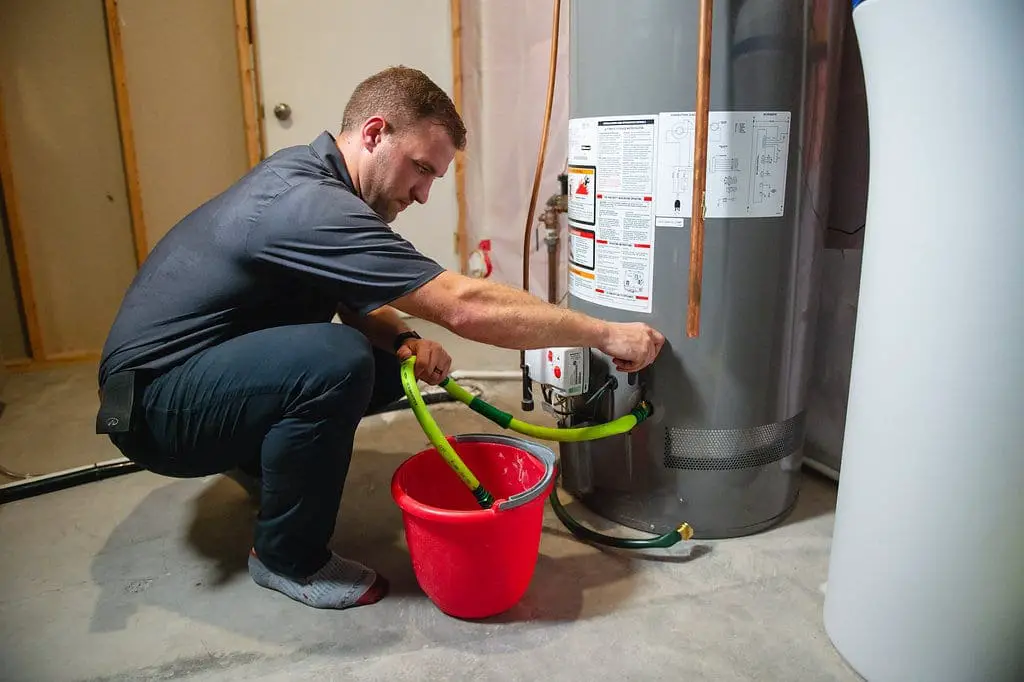
Quick Questions Before Starting
Is it your first time draining this appliance? We’ll cover all the aspects of this necessary chore so that you’ll know exactly what you’re doing. Let’s get into some general information before we jump into the details.
In this section, you’ll read about difficulty level, how long the task takes, and how much it’ll cost.
How Difficult is This to Do?
- Scale: Easy
How Long Does it Take?
- Approx. 25 minutes
How Much Do Materials Cost?
- Between $29 and $120*
Items Needed to Drain Your Water Heater
Draining your water heater is a straightforward task, but you still must have some tools to accomplish it. There are some other tools that can make your life easier, such as a utility pump, knee pads, plumber’s tape, a female PVC adapter, and a hose adapter*.
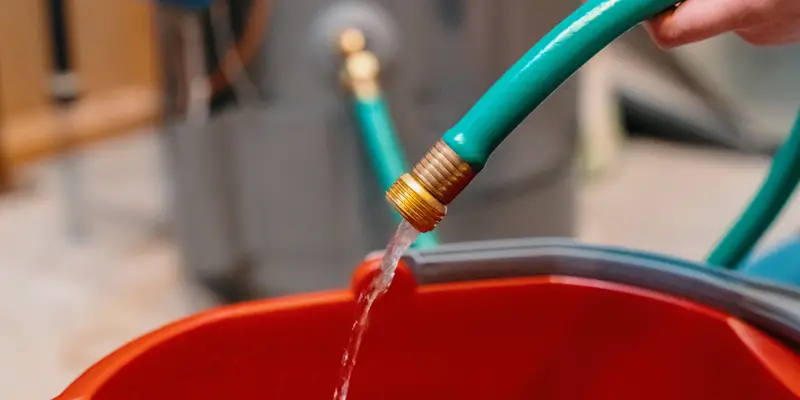
You can find pumps of different capacities and prices, but a basic one with a 12V battery should do the job*. Organize all your tools and materials before starting to drain the tank*. Those items and their prices are listed below:
- Adjustable wrench: $15
- Screwdriver: $10
- Bucket: $20
- Hose: $34
- Hammer: $16
- Hacksaw: $6
- Utility pump: $54
- Knee pads: $17
- Plumber’s tape: $6
- Female PVC adapter: $8
- Hose adapter: $8
How to Drain a Water Heater
It’s recommended that you drain your water heater from time to time, although you don’t have to do it every month. If you want to do it yourself, check the guide below:
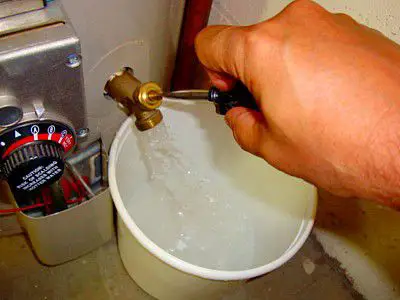
- Shut off the electricity or gas.
Never perform any maintenance with electricity or gas on. This can be incredibly dangerous. Besides, if heating parts are left exposed during drainage while the appliance is on, they can burn out incredibly fast. - Close the cold water valve.
Look for the valve that feeds the tank with cold water and shut it off. Not doing so can lead to spillage or worse accidents. Notice that most water heaters can keep water at high temperatures for hours. If you want to drain it, shut it down for a couple of hours before performing maintenance. - Get a hose to drain it.
Attach a garden hose to the appliance’s drain valve and run it outdoors or into a bathtub. The drain valve is close to the bottom of the heater. Some models may cover this valve, so look closely. When the hose is placed where intended, open the valve. - Open the pressure relief valve on the top of the heater.
It’ll help drainage to run smoothly. To reduce water pressure even more, open a hot water tap. When the water gets cold and there are no longer air bursts, shut it off.
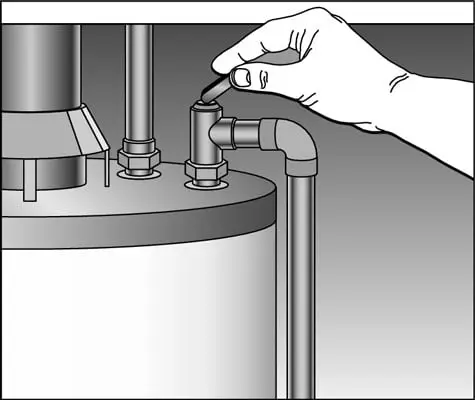
- After emptying it, allow cold water in.
It should remove any remaining sediment. You’ll know your job is done when you see water running clean from your unit. Sometimes, sediment can clog the drain valve, in which case you should reach out for professional support. - Close the drain and cold water valves again.
Take your hose outside and drain it too. - Turn electricity on again and restart your water heater system.
It’s advisable to let your tank fill before turning on electricity and gas again. Not doing so can burn the heating elements of some tanks. Check the manufacturer’s guide for clarification.
How to Drain a Tankless Water Heater
If you have a tankless water heater, the flushing process is quite different. Despite not accumulating water, the same sediment and debris can cause damage to your tankless system. Check below how to drain it.
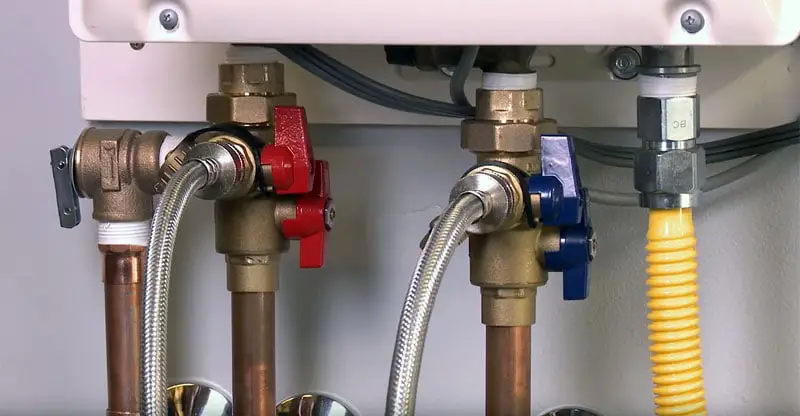
- Turn off electricity and gas sources for safety.
- Close and shut down both water valves.
Cold water and hot water valves are marked blue and red. - Look for purge valves on the hot and cold valves.
You can recognize them by their “T” shape. This step prevents dangerous sprays of hot water from accidentally burning you. - Use a hose for each valve.
Both hoses should be connected at the same time. - Different manufacturers may have other procedures for this part.
In some cases, you may need to use a sump pump. Check your manual for more information or call a professional in case of any doubt. - Clean the water heater using undiluted white vinegar.
Don’t put chemicals in it because you’ll drink this same water later on. Avoid using apple cider vinegar; it can stain the heater. - Follow your manufacturer’s guidelines to drain the system.
After the flushing is done, close the valves. - Take off the hoses and put the valve caps back in place.
- Turn the system back on.
Once again, check the manual for the correct procedure. Usually, it would help if you turned the hot and cold valves in parallel positions. - Turn on a hot water tap.
Within three minutes, there shouldn’t be any more air bursts.
Check out this video to see these steps in practice:
Why Drain a Water Heater?
There are a few reasons why you should occasionally drain your water heater. The main reason is to remove sediments that are likely to gather at the bottom over time. Too much sediment at the bottom of your heater can be pretty troublesome.
The first inconvenience you’ll face from it will come on your energy bill. Sediment buildup makes your water heater work harder and less efficiently, therefore, costing you more money.
Over time, it can corrode the bottom of your appliance, leading to leakage. In the long run, not flushing your heating tank can cause pipes to burst and reduce water pressure. It can even render the whole system useless.
Even tankless water heaters must be drained regularly. The same minerals and debris can collect in this system as well. When properly maintained, tankless systems can last for 20 years. Tank systems also last much longer when properly maintained.
Those sediments can affect the quality of your water over time. After all, sediments are mostly rust and sand from the municipal line. It’s advisable to flush your tank at least once per year, twice if you live in a region with hard water.
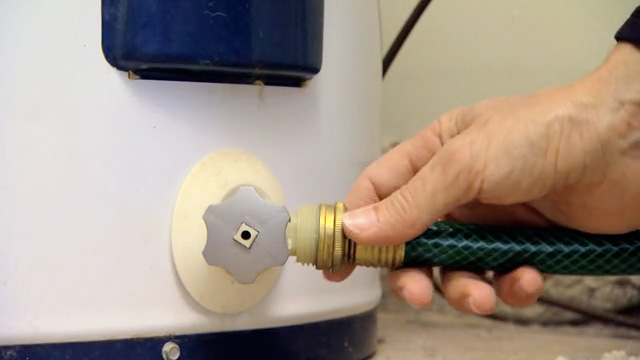
How Often Should I Drain My Water Heater?
It’ll depend on the system you use and the water supply you receive. Hard water usually leaves more calcium and magnesium sediments. It calls for more frequent flushing—from six to nine months. Some specialists suggest you do so every three months, in this case.
Tank systems usually need less frequent flushing: once per year. Specialists are unanimous in suggesting cleaning the water heating system regularly. It’s necessary for avoiding calcification of lime and sediment, which can lead to more difficult drainage.
High amounts of sediment can also clog the valves, making you call a professional and spending more money than necessary.
When Not to Drain a Water Heater
First of all, if it’s your first time doing it or you don’t feel confident enough, call a professional. Draining your water heater is typically safe and straightforward if you know what you’re doing.
Otherwise, the process can be dangerous. Mishandled hot water can burn you and others or damage nearby furniture, for instance. Even if you can do it with your eyes shut, there are other dangers to consider.
If your system hasn’t been drained for too many years, sediments start to erode the bottom, creating weak spots. It happens because those sediments overheat the material, opening small holes.
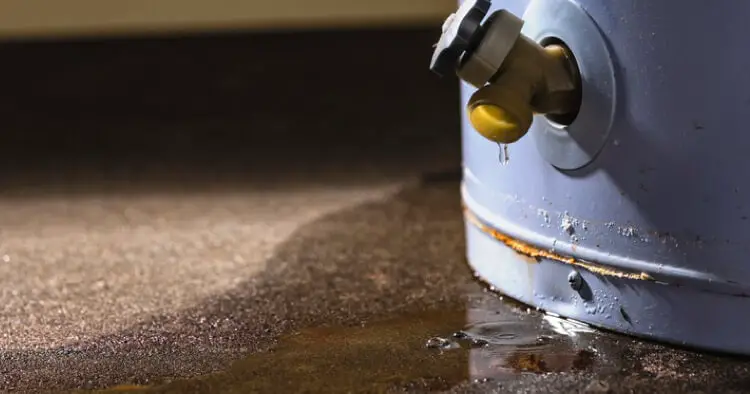
Counterintuitive as it is, those sediments close those holes and keep your tank working without leakage. When you flush it, those holes are left open, and leakage follows in a few days.
Water heater tanks use glass-lined storages. As sediments gather on specific spots, they calcify and cause the glass lining to crack over time. Those cracks can’t be repaired.
In this case, you’ll have to replace your system. So, if you’ve had your water heater for years and you’ve never drained it, it’s better not to do so.
Tips and Safety Considerations When Draining Your Water Heater
Before carrying out water heater maintenance, bear in mind there are some common hazards. We’ll discuss a few of them here.
Injuries
Hot water can spray everywhere, burning out heating parts for lack of water or simply spilling water all over the place, possibly damaging other furniture and appliances.
Turn Off Beforehand
When cleaning a water tank, remember it can keep the water very hot for a long time. So, you should turn it off several hours before draining or be extra careful when dispensing it. You can speed up the process by turning hot water taps on.
Where to Drain
It’s advisable to use the bathtub tap, for that matter. It’s not advisable to drain your water heater on your driveway or into your garden, as rust and sediment can stain your driveway and damage your plants.
Pressure
It’s also important to open the pressure relief valve, allowing air to get into the tank and making the drainage smoother. The floor around the tank should be free to ease the operation.

Regulations
Tankless water heaters require similar safety measures. The Occupational Safety and Health Administration recommends that water should be heated at 140 degrees. It’s enough to burn any adult severely, even with only a few seconds of exposure.
Anyway, you should wear rubber gloves and expendable clothes, in case they get stained.
Conclusion
Cleaning your water heating system is easy when you have the right tools and know what to do. It’s a perfect DIY task. In fact, many homeowners don’t bother hiring a plumber for it.
Still, you should follow some basic safety measures so no one gets hurt and you don’t risk damaging anything nearby.
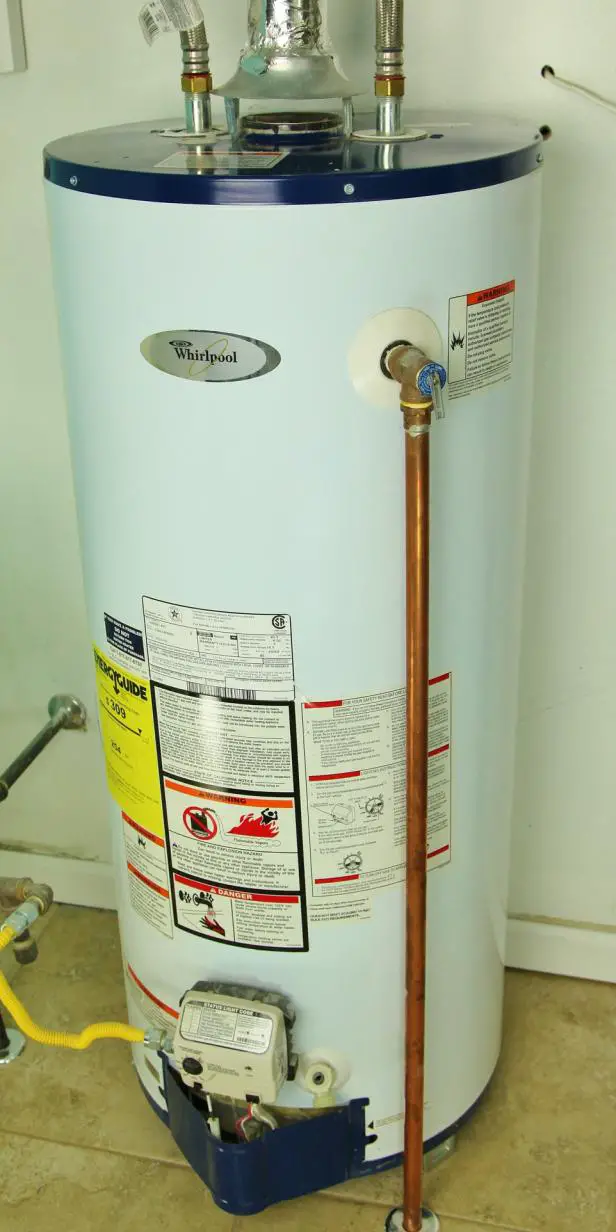
People Also Ask
Do you still have questions? We’ve included this section to clarify any remaining issues you may have. Here, you’ll get more tips on cleaning your tank faster and more efficiently, what product you should use to clean it, the best tools for the job, and more.
Prices vary, depending on where you are and your tank’s model. Typically, this kind of service can cost anywhere between $80 and $100 in Texas. In San Antonio, prices can vary from $150 to $350. Compare prices and make sure you hire a licensed professional for the job.
Most of the sediment accumulated on the heater’s bottom comes out when you flush it the first time.
If not, turn the cold water on for short periods when the tank is empty and leave the drain valve open. It should stir the remaining lime and sediment in the heater to make your heater clean.
It can take between 20 minutes and 25 minutes, depending on your tank’s size, hose, and water pressure. Small tanks take up to seven minutes to drain. If you get a utility pump or other rapid drain tool, the job can be done faster.
If you want to drain your tank fast, you should use a utility pump. This tool will make your job much easier and faster.
First, check the pump’s capacity in gallons per hour and motor power. A portable pump with a 12V battery and ½ HP should suffice, especially when electricity is off.
Yes, you still need to drain your tank, even if you use a water softener. You’ll need to do it less frequently than if you were using hard water. It’s because softened water still leaves minerals and sediment behind, although much less.
It’s not only safe, but it’s also advisable. White vinegar will clean your water heater without leaving unwanted and potentially harmful chemicals in it. You should leave it in your water tank for a couple of hours before draining it. Avoid using apple cider vinegar, as it can stain the pipes.
